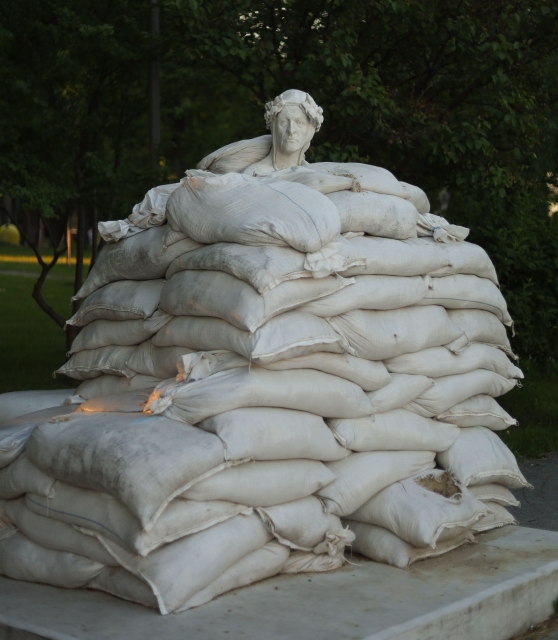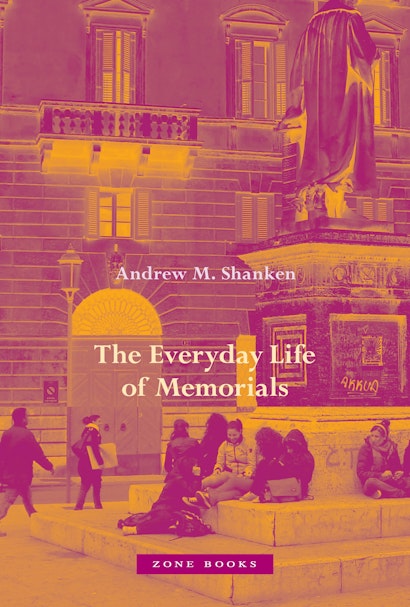One of the curiosities of the Russian invasion of Ukraine is how, even amid the deprivations of a savage war, Ukrainians have turned their attention to destroying or de-Russifying Soviet monuments and protecting their own. (Figure 1). Both urges—to erase symbols of Soviet triumphalism and to salvage their own monuments—run parallel to their effort to thwart Russia’s triumph. Outsiders may view this as an extravagance in wartime, a misguided emphasis on culture when survival itself—both of people’s lives and their nation—is threatened. With the future of Europe hanging in the balance, if not also existential issues of democracy’s fate, it is easy to sympathize with this view. Oil, machines, and manpower are scarce, yet there they are in Kyiv pulling down a ridiculously gigantic monument, one that must have seemed increasingly outdated and anomalous since the fall of the USSR. What good is all this fuss over monuments if nationhood is lost? And if Soviet monuments are patently absurd, why do they need to come down and why would Ukrainian ones be any better?
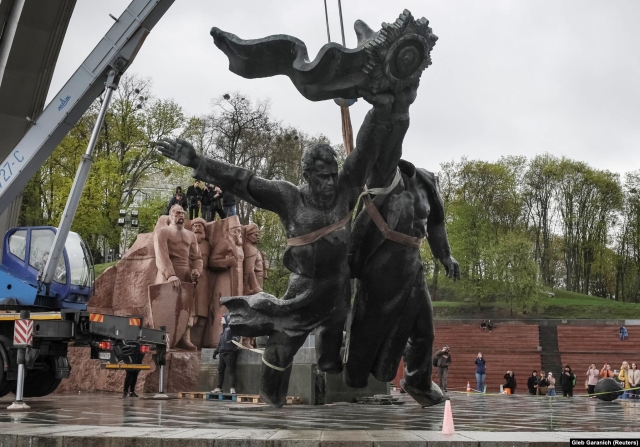
At base, this is a utilitarian view of culture. It sees monuments as stolid and inactive. According to this logic, monuments may reflect values, but they are not part of the underlying structure of reality. Here culture is adjunct, accessory, allegory. It can do no actual harm. To destroy it or save it is secondary to guns and supplies, soldiers and food. While it is true that monuments will not win the war in any literal way, what people are doing to and with them in the Ukraine, and in fact across the former Soviet Bloc, challenges this utilitarian view. Monuments condense aesthetics, ethics, politics, and feeling in space in an ever-shifting constellation of meaning, and are nearly singular in this cultural role. More correctly, people use monuments to perform this alchemy. They help us link past and present with future aspirations, imagine permanence in a maelstrom of modern change, hold the transactional world of commerce at bay, and rescue a small patch above the fray of everyday life. Even if all of these roles are labile, partial, and easily reversible—and even if we know this as we encounter monuments—they still aid us in these pursuits. Far from being merely aide memoires, then, monuments prepare our imaginations for the most human of confrontations, including war. This is why they are vital props in the Ukraine. This is why they are not merely superstructure, but agents of change.
Still it would be fair to wonder why these old behemoths retain their power. Many Soviet monuments have stood for generations, in some cases since the 1940s, many more since the height of the Cold War. With the end of the East Bloc, Soviet monuments were felled in waves of iconoclastic rage, while others, like frozen prisoners of war, weathered the indignities of their newly hostile context. In arguably the most polite response, Soviet monuments in Hungary were moved to Memento Park, a museum-like site outside of Budapest where their auratic power is dimmed by their geographical displacement. Here Marx, Lenin, Engels and a host of other figures gesture dramatically or brood soberly at one another in a closed circle of impotence. The massive statue of Lenin in East Berlin was dismantled in 1991, after years of abuse and debate. Others were made relevant as useful objects of public ridicule. Figures on the Red Army Monument in Sofia have been painted to look like Superman, Ronald McDonald, and Santa Claus. (Figure 2) After the 2014 invasion of the Crimea, they were repainted in Ukrainian colors. Still another monument, the former Monument of the Liberators of Tallinn, was spirited away to a cemetery, a typical strategy for disarming a monument that is causing too much trouble.
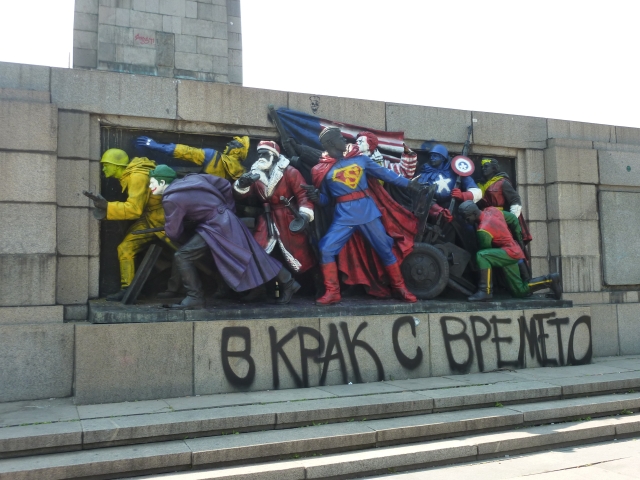
On the surface, the museum and the cemetery seem like similar safety valves for irksome monuments. They both remove the offending symbol and recontextualize it, the first enshrining it as culture and treating it didactically as history—and, as any high school student knows, what is more dead than history! The second displaces the monument that will not die and lays it to rest with the dead. These two responses go to distinct, but intriguingly braided, historical strands of how monuments have been treated since the late 18th century, when the historic monument was reinvented for modern consumption. Jules Michelet (1798-1874), after visiting Alexandre Lenoir’s Museum of French Monuments, where monuments threatened by the French Revolution were salvaged and assembled, wrote: “In fancy I filled those tombs—I felt the dead, as it were, through the marble; and it was not without some terror that I visited the vaults, where slept Dagobert, Chilperic, and Fredegona.”[1] But this is when museums were young as institutions and effigies of “great men” could, in William Godwin’s words, “paralyze the hand of oblivion” and whisper to us “things unfelt before.”[2] Will Soviet monuments assembled on the outskirts of Budapest or displaced to a cemetery in Tallinn stir the 21st-century soul like this? One answer is that these monuments linger in a liminal state. If they were truly dead, they would not need to have been moved. A similar logic applies to those Confederate monuments removed to museums in the United States, where they surrender to the caption. It is too perfect that caption derives from the Old French capcion, meaning arrest or imprisonment and, in felicitous irony, museum captions are also called “tombstones.” Museums are places where monuments are put to death. In some sense, to explain the monument, to relabel it, is to kill its original meaning, and this is the intention.
Hence the cemetery as an alternative move. Shortly after its very beginnings in the late 18th century, the modern cemetery evolved into a museum-like place where statues of great citizens were erected. In the 19th century, “city folk flocked to these peaceful, nostalgic gardens to spend the day among the flowers and the trees” and monuments.[3] The new type of cemetery was placed on the verdant edges of cities, separate from the civic life that it once served. In fact, it was a novel cultural landscape, one that offered nonfuneral monuments a place beyond the traffic and defilements of secular life that apparently troubled the medieval world much less than the zoned soul of the modern one. Memorials to the many European wars of the 19th century can still be found in cemeteries across the continent. The devastating wars of the 20th century changed the cemetery’s meaning decisively. In the years after World War I, the cemetery became a nearly anti-iconic setting, one anathema to the monuments of earlier generations and now resistant to non-funerary monuments such as war memorials. Eventually, one way to defuse a controversial memorial was to move it to a cemetery. To borrow from the historian Thomas Laqueur, these memorials are “not quite dead.” They patrol the changeful boundary between life and death, not just of our bodies, but also of our ideas, beliefs, and controversies.[4] Without them—and other cultural objects—we cannot come to consciousness about what is worth fighting for or against.
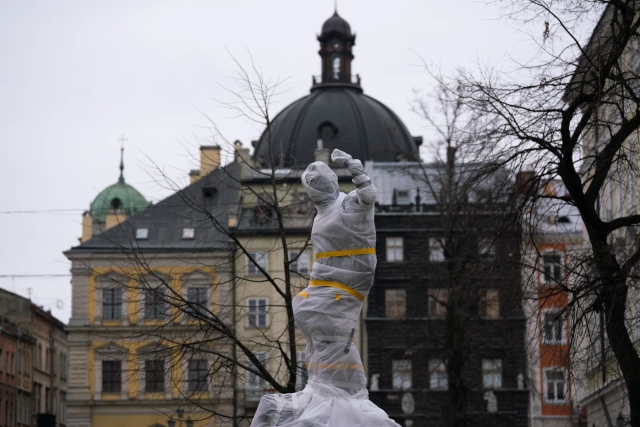
Perhaps that is why it is eerily moving to see monuments in the Ukraine protected against damage, as with the one in Lvyv in figure 3. Deprived of its identity, but not of its gesture, it symbolizes the resistance and, bound as it is in yellow tape, is an apt symbol of the Ukrainian struggle. Far from being “not quite dead,” this one is struggling for its freedom.
Andrew M. Shanken is Professor of Architecture at the University of California, Berkeley. He is the author of 194X: Architecture, Planning, and Consumer Culture on the American Home Front and Into the Void Pacific: Building the 1939 San Francisco World’s Fair.
Notes
[1] Michelet, quoted in François Hartog, Regimes of Historicity: Presentism and Experiences of Time, trans. Saskia Brown (New York: Columbia University Press), p. 177.
[2] William Godwin, Essay on Sepulchres (London: Printed for W. Miller, 1809), pp. 96 and 99.
[3] Spiro Kostof, America by Design (New York: Oxford University Press, 1987), p. 219.
[4] Thomas W. Laqueur, The Work of the Dead: A Cultural History of Mortal Remains (Princeton: Princeton University Press, 2015), p. 67.
